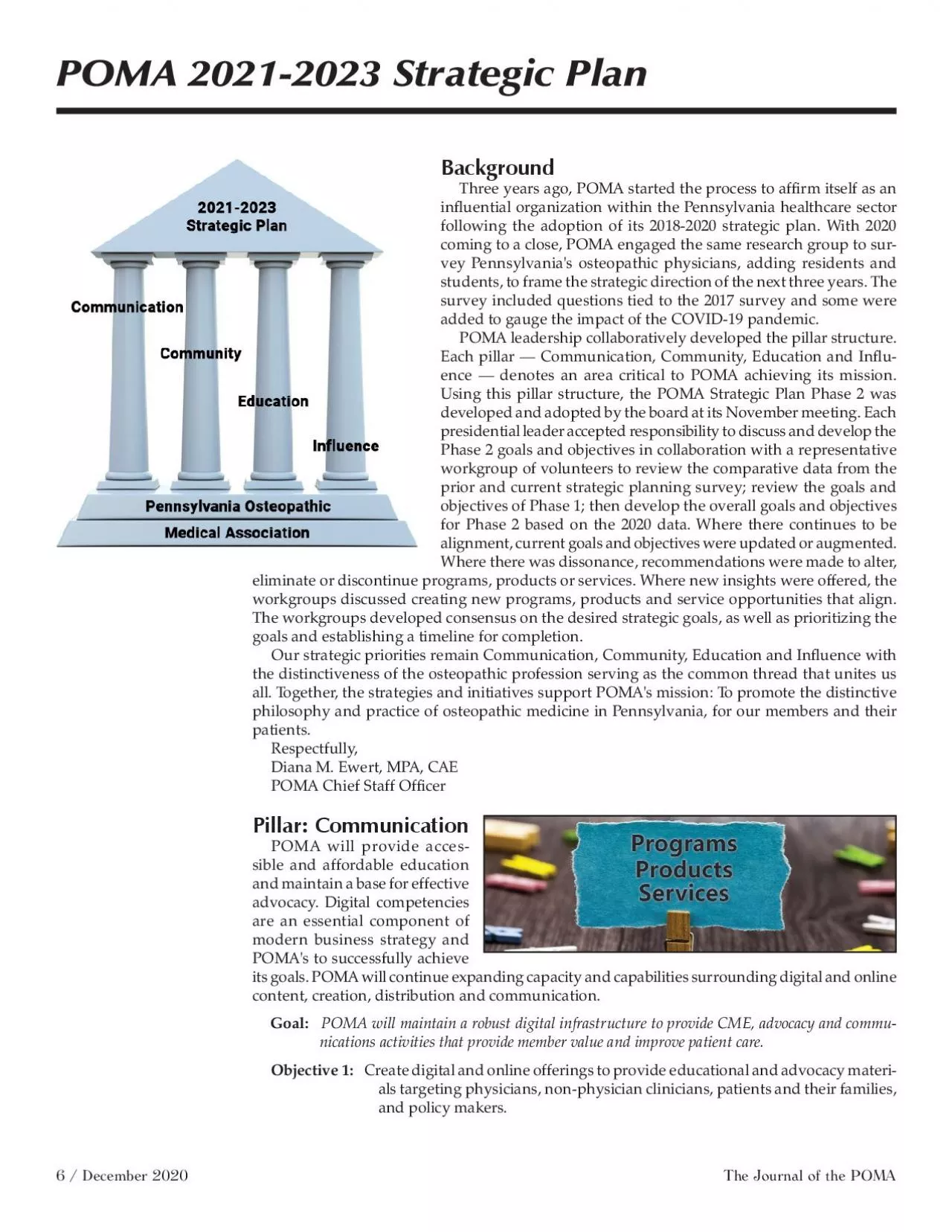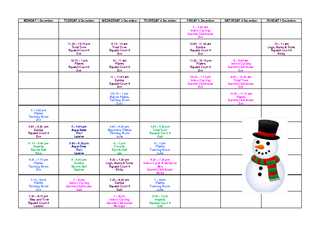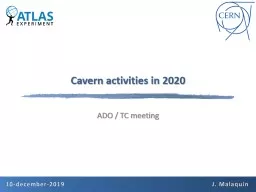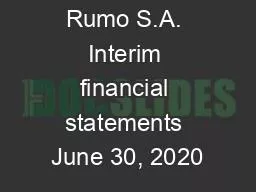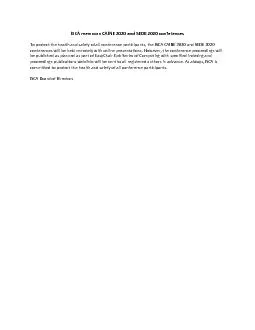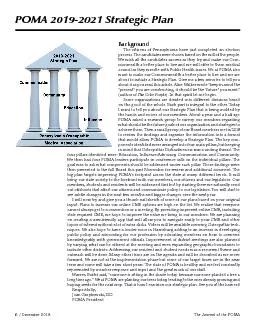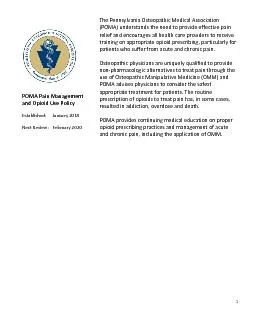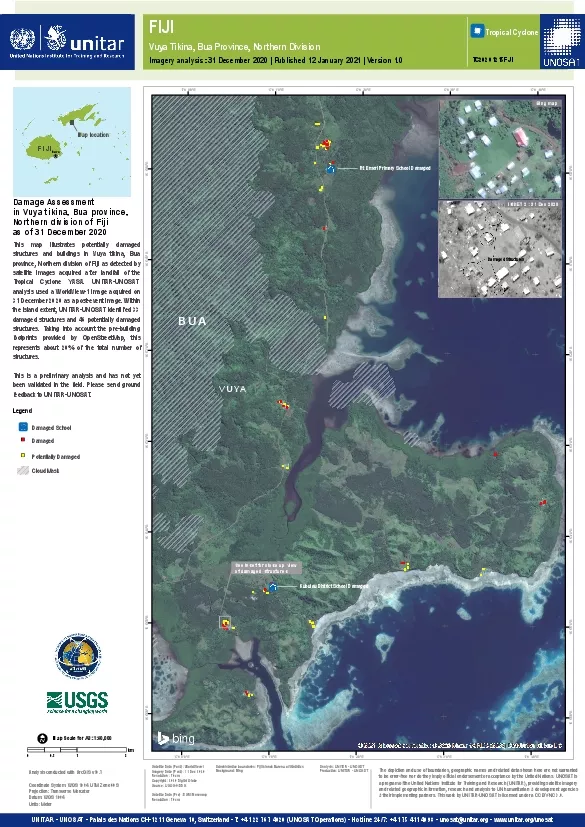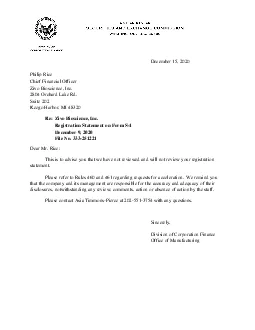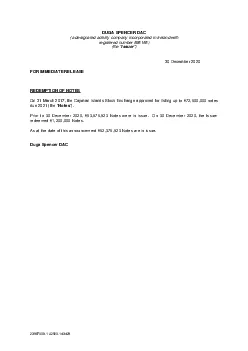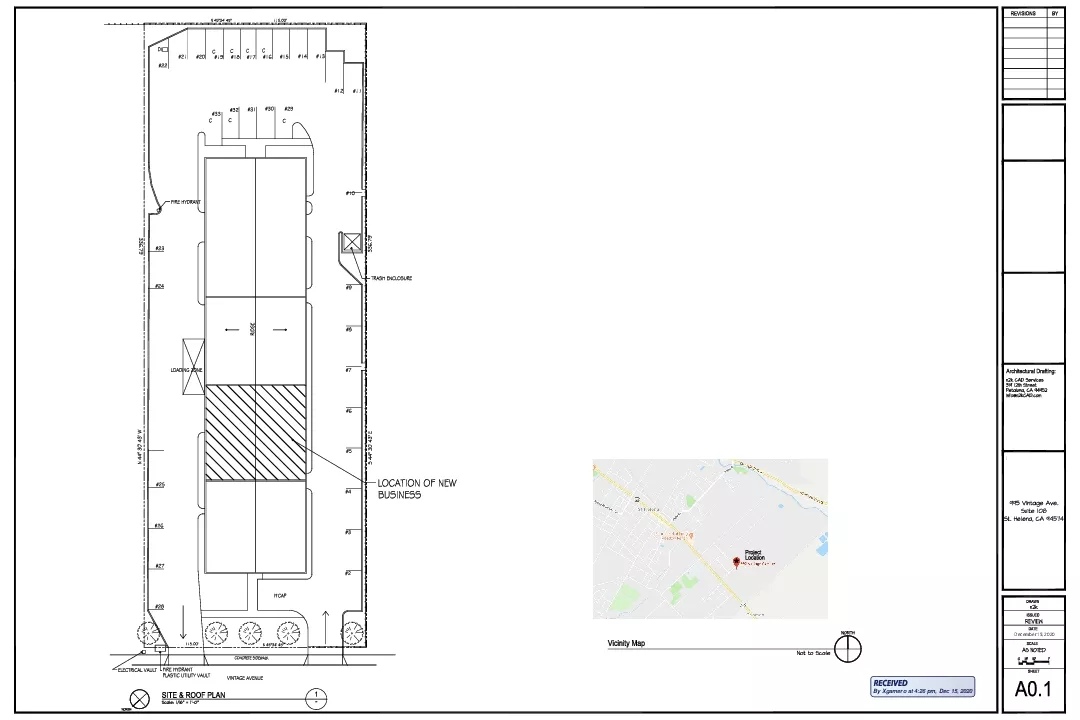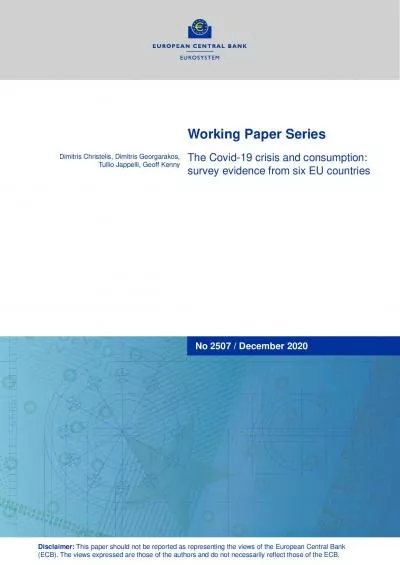PDF-6 December 2020 The Journal of the POMA
Author : gelbero | Published Date : 2021-08-18
POMA 20212023 Strategic PlanBackgroundThree years ago POMA started the process to af31rm itself as an in30uential organization within the Pennsylvania healthcare
Presentation Embed Code
Download Presentation
Download Presentation The PPT/PDF document "6 December 2020 The Journal of the POM..." is the property of its rightful owner. Permission is granted to download and print the materials on this website for personal, non-commercial use only, and to display it on your personal computer provided you do not modify the materials and that you retain all copyright notices contained in the materials. By downloading content from our website, you accept the terms of this agreement.
6 December 2020 The Journal of the POMA: Transcript
Download Rules Of Document
"6 December 2020 The Journal of the POMA"The content belongs to its owner. You may download and print it for personal use, without modification, and keep all copyright notices. By downloading, you agree to these terms.
Related Documents

